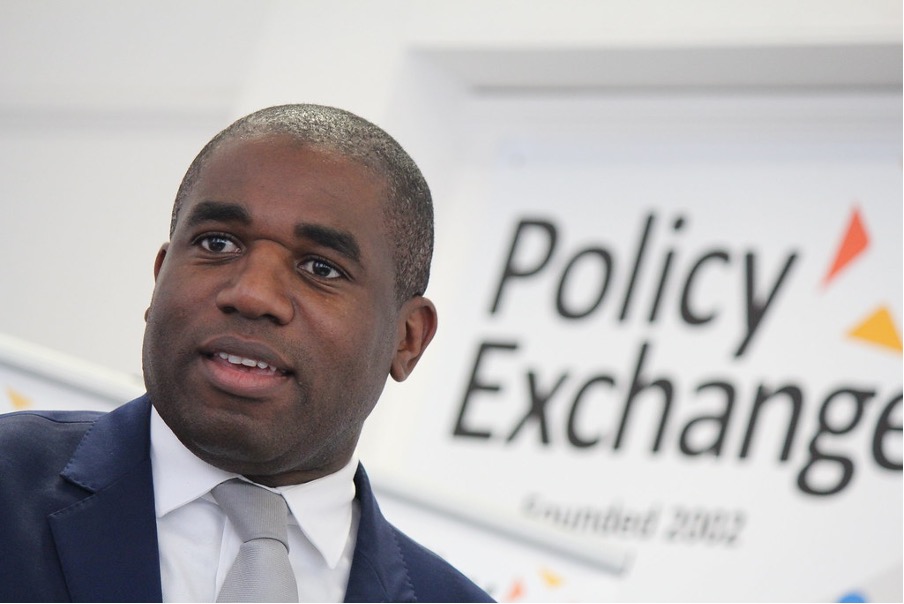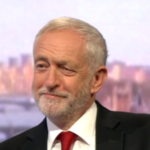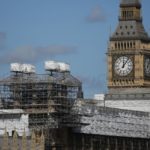
Featured Image: ‘Rt Hon David Lammy MP speaking at the launch of his report Taking Its Toll‘ by Policy Exchange on Flickr is licensed under CC BY 4.0 (link to license deed).
Sir Keir Starmer surprised just about everyone — including his closest allies — when he sprung a substantial reshuffle of his shadow cabinet on the Parliamentary Labour Party. In doing so, he infuriated the hard-left by forcing out the last remaining Corbynite, demoting or sacking well-liked parliamentarians, and reigniting another battle with his deputy. Yet despite the poor management of this reshuffle, it is exactly what the party needs at exactly the right time.
Similarly to the last shadow cabinet reshuffle, Sir Keir demonstrated his undisciplined political abilities. Cabinet reshuffles ought to be well-planned and swiftly executed, with contingencies considered for when one stubborn minister puts up a fuss or another takes a demotion badly. It is a symbol of strength when a leader can get their preferred candidates into the jobs they want them to do and steamroll over any opposition to that mission.
The morning of Monday 29th November began with news of a reshuffle in the coming weeks. Briefings came through that soon made it apparent that the reshuffle was not in fact happening after Christmas, but rather, after lunch. Cat Smith was the first casualty of the day. It was reported that she had been offered to stay in her role as Shadow Minister for Young People, but that she had raised grievances about Corbyn’s continued suspension from the party and the leadership’s position on electoral reform. Smith subsequently resigned — which possibly derailed Starmer’s plan for the rest of the day.
This political intrigue unfolded while Labour’s deputy leader Angela Rayner was giving a major speech on anti-corruption. When asked afterwards about her knowledge of the reshuffle, she said that she had been informed that one was occurring but was not privy to any details. As was the case with the last May’s shadow cabinet reshuffle, many in Rayner’s office felt undermined and a smaller-scale briefing war broke out again. This soon died down though, demonstrating that this sort of petty infighting between advisers is being dealt with better nowadays.
Throughout the early afternoon political journalists were spreading rumours of who was in and who was out, with some consistent patterns emerging — though details about whether these were promotions, demotions or sackings weren’t entirely clear. The strongest rumours around this time were that Ed Miliband was headed for a demotion for supposed disloyalty; and that Nick Thomas-Symonds was set for demotion for his relative obscurity, with Thornberry set to take over his brief as Shadow Home Secretary. It soon became clear too that Kate Green would be pushed out of her role in Education.
Hours went by with further rumours pouring in, but few confirmations of who was actually moving to what job. By the early evening a flurry of activity came about that took many by surprise. Many of Westminster’s speculations were true, but some notable ones got debunked. Starmer had decided that his shadow cabinet required a mix of youthful ambition and old-hand experience — conjoined together by LOTO loyalism.
To make way for his starting XI, Sir Keir was forced to drop some players. The most surprising demotion by far was Lisa Nandy. Nandy is widely considered to be popular across all factions of the Labour Party and well-respected as both a policy expert and a strong communicator. Despite these qualities she was taken away from the role of Shadow Foreign Secretary and instead placed opposite Michael Gove as the shadow minister in charge of Local Government & Communities and, importantly, ‘Levelling Up’. It may seem like a demotion at first glance but considering Nandy’s political career has been centred around localism and the improvement of towns and their public services — famously arguing strongly for the funding of local buses — this might in fact be the briefing she truly desires.
Others that got moved — or kicked — included Nia Griffith, Shadow Secretary of State for Wales, and Shadow Environment Secretary Luke Pollard. Pollard’s departure surprised many, as he is seen as a solid media performer and someone that knows how to do the job very well. He has, however, taken time off recently from that role to deal more closely with the tragic mass shooting that occurred in his Plymouth constituency a few months ago. Perhaps it was this break that made him more willing to move on from the job and return to the backbenches. Another victim of the reshuffle was Jon Ashworth, the Shadow Health Secretary. He was moved down to Work and Pensions — whether that was due to his mediocre media abilities or his perceived loyalties to the likes of Nandy or Rayner is unclear.
As rumours had predicted, half of Ed Miliband’s job was taken away from him. Miliband now only covers Energy and Climate Change, while Jonathan Reynolds has been brought in to handle the business side of his briefing. The rumours about Nick Thomas-Symonds’ demotion were right too. The man known for being unknown was handed a role as Shadow Secretary for International Trade — which is unlikely to boost his media visibility beyond its current tragic state. However, these departures made way for some familiar faces to join the ranks.
Some of the Labour Party’s few remaining Golden Oldies were brought back from the political grave in a move welcomed by many. David Lammy — a former Minister in the previous Labour governments — moved up the rungs to become Shadow Foreign Secretary. He is considered experienced, clever, and a decent communicator — shown during his weekly radio show on LBC. The other big comeback is Yvette Cooper. Cooper was Work and Pensions Secretary in Brown’s cabinet, and is considered to be one of the brightest and most well-respected parliamentarians of her generation. She returns to the role of Shadow Home Secretary — a position she held under Miliband. What makes Cooper an interesting political force now is that she represents what was once a safe Labour seat but is now a marginal, leave-voting ‘red wall’ constituency.
This return of Labour’s heavyweight figures is accompanied by some of the party’s brightest and most ambitious young members. Most prominent of whom is Wes Streeting. The MP for Ilford North took on the Child Poverty briefing earlier this year and has been one of the most visible shadow ministers in Starmer’s team — despite having a fairly minor role. This is thanks to his intellect, media abilities, and reliable adherence to Starmerism. It was unsurprising then that the man tipped as a possible future leader should be promoted to one of the most important roles in the shadow cabinet: Health. Alongside Streeting is Bridget Phillipson in Education — the only shadow cabinet member to hail from the North East — and Lucy Powell who takes over at Culture, Media and Sport.
The new shadow cabinet is an impressive showing of experience and youthful vigour. Most of all, it is a shadow cabinet that can perform reliably on the media circuit and one that is moulded in Starmer’s image — or at least one that is willing to pretend to be. Perhaps a few tweaks might be made down the road, but at its core this is clearly a General Election shadow cabinet — and one that does give off an aura of alternative government. Some critics on the left have pointed to a rightwards shift in the ideological balance of the shadow cabinet, but as the BBC’s political editor noted: Starmer’s choices are less about politics and more about media performance.



Average Rating